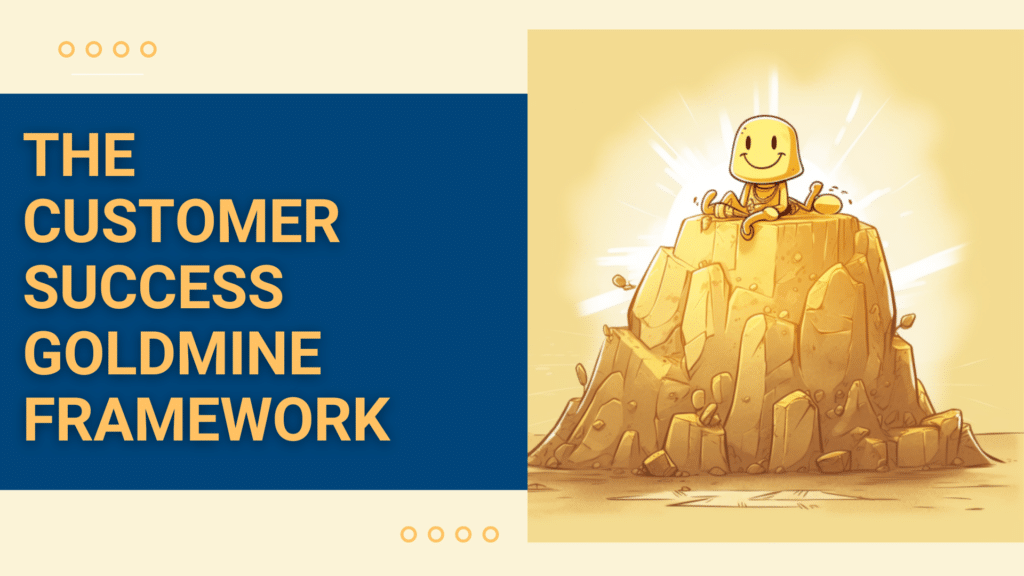Let’s face it. Difficult customer conversations are hard. It doesn’t matter whether you’re a brand new CSM or a CSM with a lot of experience or a CS Leader, having difficult conversations with customers is hard. But they’re a necessary part of helping to serve your customers–whether the difficult conversation is because your company made a mistake or because the customer isn’t taking the recommended actions for their success.
Having difficult conversations are a part of helping your customers succeed. And knowing how to make those conversations better by avoiding common mistakes, makes it much easier for both you and your customers. Here are 9 common mistakes made during difficult customer conversations and how to avoid them.

Mistake 1
Losing focus/getting sidetracked on other issues
How to Avoid:
Before going into your conversation, identify the one main issue you would like to discuss. Your main issue could be falling usage rates, low adoption, or low engagement. During the difficult conversation, you want to stick with your one main issue. If the customer brings up other issues, tell the customer that you’ll write down these other issues and that the two of you can address them at another time. You want to keep the focus of this conversation on the one main issue you’ve chosen so that you can focus on resolving it.

Mistake 2
Being unclear or vague
How to Avoid:
Before going into your difficult conversation, take a few moments and write out the one main issue you’d like to discuss and the reasons why. These notes will help you keep on track during the conversation. If you find you’re being unclear or vague at any point, you can quickly glance at your notes and remind yourself of the reasons why you wanted to discuss the one main issue. Taking this moment helps you to realign yourself so you can continue the conversation more effectively.

Mistake 3
Not confirming the customer’s view
How to Avoid:
In any conversation where anxiety or emotions are running high, it’s so easy to make this mistake. The mistake is to move from one part of the discussion to another without confirming you understand the customer’s view (some people call this summarizing the customer’s view). While you may confirm the customer’s view in your everyday customer conversations, in difficult conversations, it’s easy to forget to do this. It’s because difficult conversations are uncomfortable, and we tend to want to get through them as quickly as possible.
To avoid this mistake, write a note to remind yourself to confirm that you fully understand the customer’s view on what you just discussed before you move onto another part of the discussion.

Mistake 4
Giving your opinion too early
How to Avoid:
Sometimes, customers ask for a solution or your opinion early in a difficult conversation because they also are feeling uncomfortable and want to get through the conversation as quickly as possible. We’re often so eager to get to a solution that we offer our opinions before the issue has been thoroughly examined. Both of these scenarios can bring a difficult conversation to a quicker close but the risk is that the issue hasn’t been dealt with and will continue to stay unresolved.
If the customer asks your opinion before you’ve fully explored the issue and you’ve confirmed the customer’s view, say “I’ll share my thoughts with you before we end our conversation, but right now, let’s keep exploring.” If you want to offer an early solution before the issue has been thoroughly examined, try to catch yourself and stop. Even if you already gave your opinion, you could always say something like “I’m sorry. Sometimes I get ahead of myself. Let’s keep exploring before I give my opinion.”

Mistake 5
Not using an intro statement
How to Avoid:
An intro statement is an ideal way to start a difficult customer conversation. The intro statement allows you to set the tone for the meeting. The intro statement also allows you to start a difficult customer conversation with confidence while reducing your anxiousness or nervous energy. Ideally, your intro statement should include:
- a quick greeting
- a brief statement about the one main issue
- a specific example that illustrates the issue
- clarification of what’s at stake if the issue isn’t resolved
- how you contributed to this issue
- your wish to resolve the issue
- an invitation for the customer to respond
Write your intro statement and read it out loud a few times before the conversation begins so it sounds and feels natural to you. If you can’t memorize your intro statement, you can let the customer know at the start of the call that you’ve prepared an intro statement and that you would like to read it as a way to kickoff the meeting. Creating an intro statement might take a few minutes of your time to write. But over time, it will become a natural part of how you start difficult conversations with your customers. Because an intro statement is so powerful in setting the right tone, laying the issue out clearly, and showing your commitment to resolving the issue, it will become a tool you’ll want to use.

Mistake 6
Failing to check in with the customer’s feelings
How to Avoid:
Taking a few moments to ask the customer about their feelings is like a temperature check to make sure the conversation is progressing well. Sometimes, it’s very evident what a customer feels by the emotions they’re displaying and the words they’re saying, and other times, it isn’t obvious at all. At some point in the conversation, you want to check in with the customer to gauge their feelings around what’s been discussed so far. While you may feel the conversation is going well, the customer may not feel the same way.
You can ask something simple like “How do you feel about what we’ve discussed so far?” or “What are your thoughts about how this conversation is progressing?” The risk in failing to ask the customer is that they may walk away from the conversation more upset than when they entered. Asking the customer how they feel about the discussion reduces this risk, but it also shows that you care about their feelings and about resolving the issue.

Mistake 7
Doing most of the talking
How to Avoid:
Some of us get very talkative when we’re nervous. Being very talkative in a difficult customer conversation means the focus is on you rather than on the customer. Use your intro statement to help calm your nerves when the meeting starts. Over time, the intro statement will become a feedback loop to help you remember to calm down and focus. This is one of the benefits of using it. You can also post notes on your computer or in a notebook to help remind you to take a few breaths to calm your nerves. Bringing your anxiety down will help you talk a little less and focus on the customer and the issue a little more.

Mistake 8
Not watching the time
How to Avoid:
There are two mistakes with not watching the time during a difficult customer conversation – one is rushing through the meeting to quickly end it and the other is taking too long to explore the issue and time runs out. If you’re prone to rushing through the issue to get to solutions quickly, use the intro statement to set the tone. If you’re on a virtual call, have your phone close to you with a timer to show how much time is left before the meeting ends. You know the difference between pushing through a meeting and having a meeting end early because the issue is truly resolved. Glance at your phone and, based on the number of minutes left in the meeting, ask yourself if you’re rushing the meeting. If you are rushing, take a breath, calm down, and slow the meeting pace by asking additional questions or by checking in with the customer’s feelings.
The second common mistake around time is to take such a long time exploring the issue in such great detail that time runs out before the issue is resolved. A simple way to avoid having this happen is to set a timer with a 15-minute warning before the conversation starts. When the 15-minute warning goes off, you can pivot the discussion and start discussing potential solutions before the meeting ends. If it feels like 15 minutes isn’t enough time to wrap up, ask if the customer is OK with scheduling another meeting. If they are OK with another meeting, schedule it before ending the call. And if the customer isn’t OK with another meeting, try your best to resolve the issue in the remaining 15 minutes.

Mistake 9
Using silence incorrectly
How to Avoid:
Sitting in silence can feel like an eternity when you’re anxious, which nearly everyone is during a difficult conversation. If silence in tense or uncertain situations is hard for you to endure, you’re not alone. By filling in the silence and not allowing the customer time to quietly formulate their thoughts or think through what they just heard, you have just focused the conversation back on you. If you’ve ever had someone fill in the silence while you’re trying to process something, it can be pretty frustrating.
The solution is to learn to sit with the silence. If you just asked the customer a question, give them time to respond. While you may be eager to move the conversation along, they may be thinking about what was just said or maybe they’re trying to process what you told them because this is new information to them. To avoid filling in the silence, practice learning how to be OK with silence in non-difficult conversations. You can practice during regular customer calls, with colleagues, with family members, or with friends. Then, when you’re in a difficult conversation where emotions are high, you will already have the skill in place. Learning to avoid these 9 common mistakes will make your difficult customer conversations flow smoother, be more effective, and make you more confident in your ability to handle any difficult customer conversation that comes your way in the future.
Originally published in Churn Zero’s blog.
Difficult Customer Conversations
Difficult Customer Conversations is intended for Customer Success Managers, and aspiring CSMs, who want to more skillfully and confidently navigate tough conversations with customers. This course covers 4 Tools for having difficult conversations and offers practice with real-world customer scenarios.
Learn more or sign up for this course.
(You’ll be redirected to SuccessCoaching’s site.)




